Are you tired of hiding your smile because of yellow or stained teeth? 2 You’re not alone. Millions of people struggle with tooth discoloration. But here’s some good news: modern teeth whitening techniques can work wonders.
This article will reveal eight dazzling secrets about the science behind teeth whitening. 1 Get ready to flash those pearly whites! 3
Key Takeaways
Teeth whitening works through chemical reactions using hydrogen peroxide or carbamide peroxide, which break down stains on teeth.
Professional in-office whitening treatments use stronger bleaching agents (25-40% hydrogen peroxide) and can lighten teeth up to 8 shades in one hour.
Blue light between 450-500 nm wavelengths activates whitening gels and speeds up the bleaching process when combined with peroxide.
The pH level of whitening products is important – too acidic (below 5.5 pH) can damage tooth enamel, so many treatments include neutralizing agents.
Proper oral hygiene and avoiding staining foods/drinks helps maintain whitening results long-term. Using a straw and rinsing after eating dark foods can prevent new stains.
Table of Contents
Causes of Tooth Discoloration
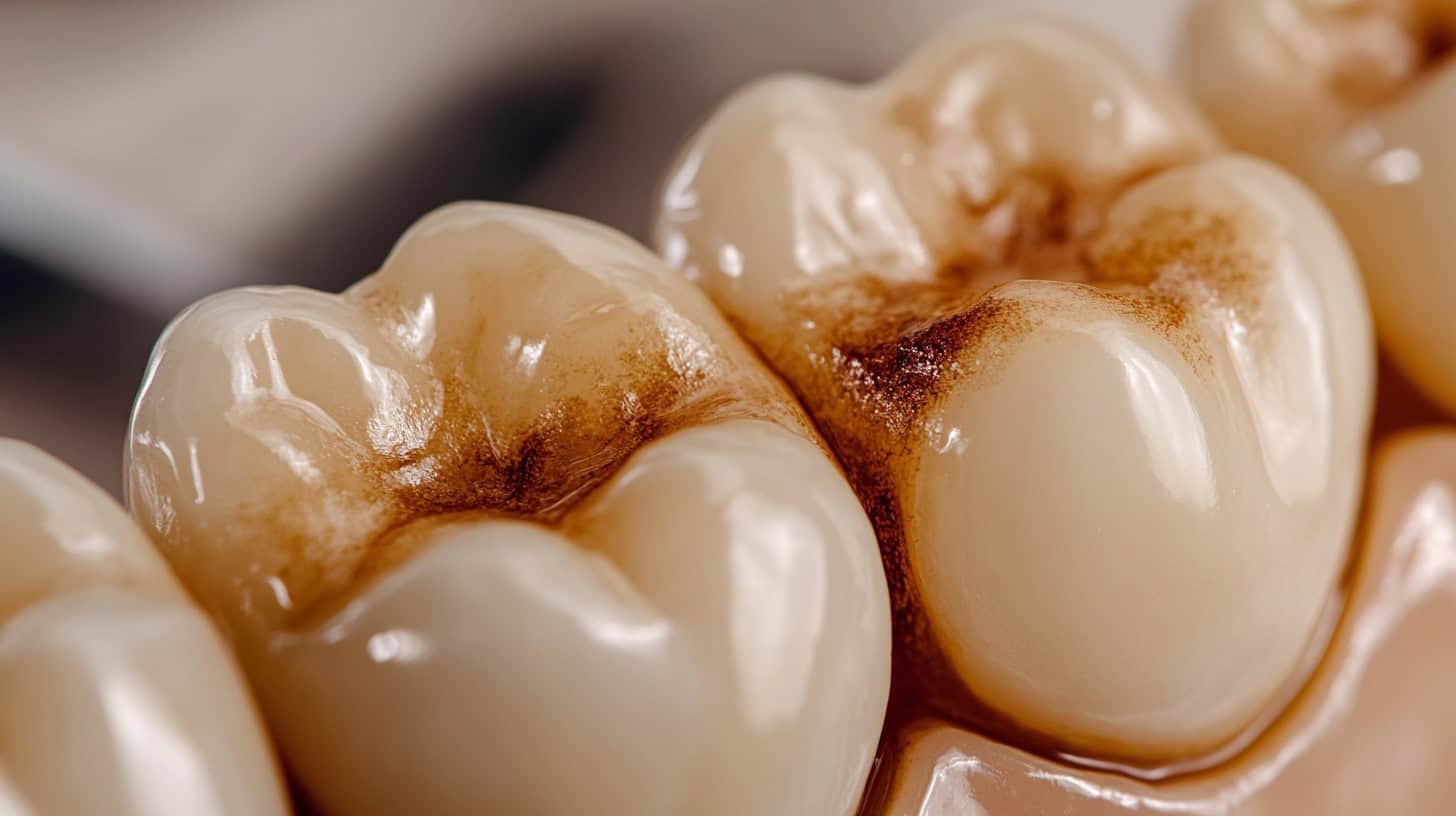
Ever wonder why your pearly whites aren’t so… white? Your teeth can lose their sparkle for many reasons. Some culprits hide in your daily cup of joe, while others lurk deep within your chompers.
External Stains
External stains on teeth are like unwanted guests at a party. They come from things we love – coffee, tea, red wine, and even some fruits. These pesky marks stick to the outer layer of our teeth, called enamel.
Your teeth are like tiny sponges. They soak up color from what we eat and drink. But don’t worry! Most external stains aren’t permanent. 2
Getting rid of these stains is easier than you might think. Whitening toothpastes can help scrub away light stains. For tougher marks, over-the-counter strips or gels work great. If you’re after that Hollywood smile, a dentist can use stronger stuff to remove stubborn stains.
I once tried whitening strips at home – they worked great, but boy did my teeth feel sensitive for a few days! Good brushing habits are key to keeping that sparkle long-term. 1
Internal Stains
Internal stains lurk deep within your teeth. They’re sneaky culprits that can’t be brushed away. These stains often come from bleeding inside the tooth or dead pulp tissue. Sometimes, leftover materials from root canals cause them too. 3 Dentists use special tricks to fight these hidden foes. They apply strong bleaching agents right inside the tooth. 1 It’s like sending in a secret agent to zap the stains from within.
But wait, there’s more! This internal bleaching isn’t a walk in the park. Dentists prefer the “walking bleach” method. It’s not about taking your tooth for a stroll. Instead, they put the bleach inside and let it work its magic over time.
It’s effective and doesn’t need those pesky at-home trays. But heads up, geeks! This process can have risks. It might cause your tooth to start dissolving from the outside. 3 Yikes! That’s why dentists are extra careful, especially if you’ve had tooth trauma before.
The Chemistry Behind Teeth Whitening

Ever wonder how teeth whitening works? It’s all about chemistry! The secret lies in two key players: hydrogen peroxide and carbamide peroxide. These compounds break down stains on your teeth, leaving them brighter and whiter.
Role of Hydrogen Peroxide
Hydrogen peroxide is the star of the teeth whitening show. This powerful agent works its magic by breaking into water and oxygen molecules. These tiny oxygen bubbles dive deep into your tooth enamel, attacking those pesky stains.
They oxidize the chromogens – fancy talk for color-causing compounds – and turn them into lighter shades. It’s like a mini-bleaching party happening right in your mouth! 5
Hydrogen peroxide: Nature’s tooth whitening wizard!
But here’s the cool part: H2O2 doesn’t just stop at surface stains. It can penetrate deep into the tooth structure without causing harm. Products like Opalescence Boost, Go, and Endo harness this superpower.
They unleash active oxygen molecules that zap away discoloration from the inside out. It’s like giving your teeth a secret weapon against stubborn stains! 4
Role of Carbamide Peroxide
Carbamide peroxide is the unsung hero of teeth whitening. This compound breaks down into hydrogen peroxide, the real star of the show. It’s like a secret agent, sneaking into your teeth and releasing its whitening power slowly.
Dentists love it because it’s gentler on teeth and gums. 6
The magic happens when carbamide peroxide meets water in your mouth. It splits into hydrogen peroxide and urea. The peroxide then goes to work, breaking up stains and making your teeth sparkle.
Most at-home kits use 10-22% carbamide peroxide. That’s enough to get the job done without risking tooth sensitivity. 1 Next up, let’s dive into the various teeth whitening methods you can try at home or at the dentist’s office.
Molecular Mechanics of Bleaching Agents
Let’s dive into the nitty-gritty of teeth whitening! Bleaching agents work their magic at the molecular level. These tiny warriors break down stains on your teeth. How? They release active oxygen molecules.
These molecules are like little scrubbers. They attack the discolored bits of your teeth. It’s a chemical battle happening right in your mouth! 1
The main player in this game is hydrogen peroxide. It’s the superhero of teeth whitening. When it touches your teeth, it splits into water and oxygen. The oxygen then goes to work.
It breaks apart the bonds that hold stain molecules together. This process is called oxidation. It’s the same thing that makes metal rust… but in this case, it makes your teeth shine! 5
Various Teeth Whitening Methods
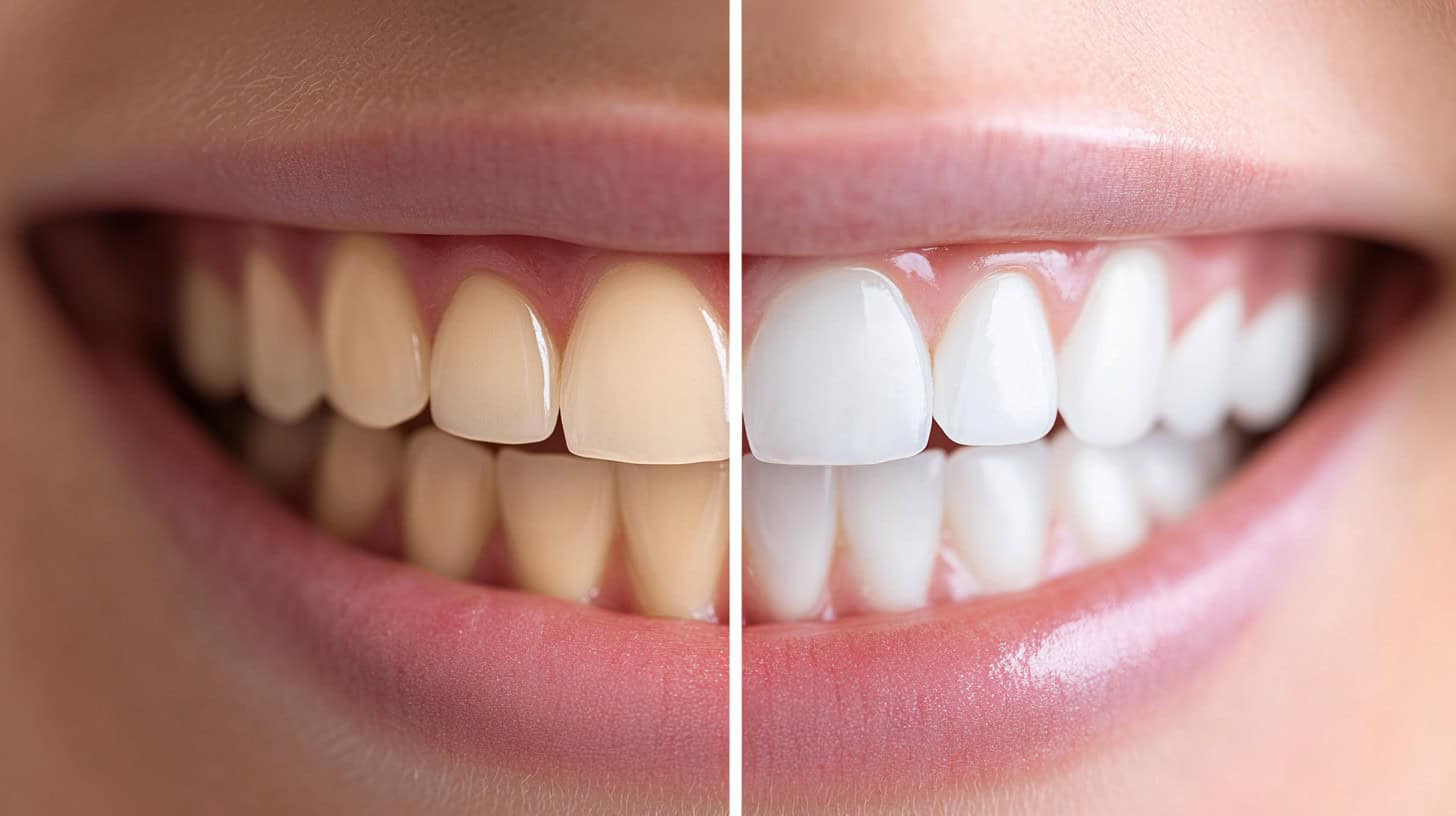
Ready to brighten your smile? You’ve got options! From store-bought kits to pro treatments, there’s a way to whiten that fits your lifestyle and budget.
Whitening Toothpaste Options
Whitening toothpastes offer a quick fix for stained teeth. These pastes contain special ingredients to buff away surface stains. Common components include abrasives, hydrogen peroxide, and activated charcoal.1 They can lighten teeth by 1-2 shades, which is modest but noticeable.7
A smile is the best makeup any girl can wear. – Marilyn Monroe
But geeks, beware! There’s a catch. Long-term use of these pastes may harm your teeth. They can make tooth surfaces rougher and weaker.7 Some even mess with the mineral content of your pearly whites.
So, while they’re handy for a quick polish, don’t overdo it. Your enamel will thank you!
Over-the-Counter Whitening Strips and Gels
Moving from toothpaste, let’s check out another popular at-home option. Over-the-counter whitening strips and gels offer a step up in teeth-brightening power. These products pack a peroxide punch, but in smaller doses than pro treatments.
Strips stick right to your teeth, while gels get painted on. Both work to lift stains and lighten your smile by 1-2 shades. Pretty cool, right? 8
But here’s the catch – you’ll need to keep at it. Results don’t last forever, so regular use is key. Think of it like maintaining a new haircut. These products are great for touch-ups between dental visits or for folks who want a gradual change.
Just keep in mind, they’re not as strong as what you’d get in a dentist’s chair. But for a DIY approach to a brighter grin, strips and gels can be a solid choice. 9
Tray-Based Whitening Systems
Tray-based whitening systems are a popular at-home teeth bleaching method. They use custom-fitted trays filled with carbamide peroxide gel. You wear these trays for 2-4 hours daily or overnight. 1 The gel slowly releases hydrogen peroxide, which breaks down stains on your teeth. Most people see results in a few days, with teeth getting 1-2 shades lighter.
These systems offer a middle ground between store-bought strips and pricey dentist treatments. They’re more effective than toothpaste but gentler than pro whitening. 4 Some folks might feel tooth sensitivity or gum irritation.
But don’t worry – it’s usually mild and goes away after treatment. Next up, let’s look at how light affects teeth whitening.
Professional In-Office Whitening
Professional in-office whitening packs a punch. It uses strong bleaching agents to give fast, eye-popping results. 1 A dentist applies a high-dose gel to your teeth and may use a special light to boost its power.
The whole process takes about an hour, tops.
A brighter smile in just one visit? That’s the magic of professional whitening!
This method often lasts longer than DIY options. 10 It’s pricier, but many find it worth the cost. Some folks need more than one session to get their dream smile. The good news? You’ll see a big change right away.
Just be ready for a bit of tooth sensitivity after – it’s normal and fades fast.
The Effect of Light on Teeth Whitening
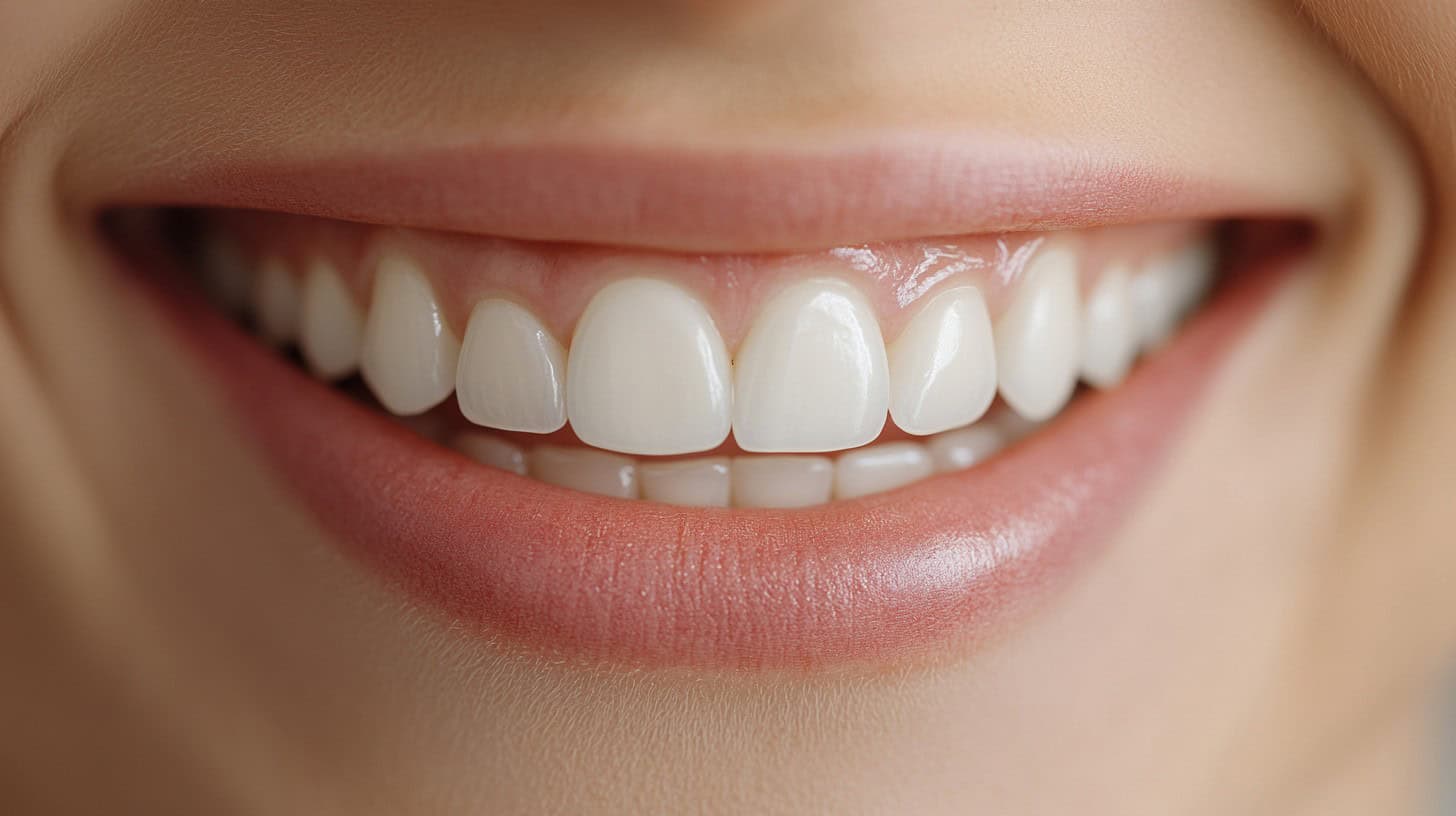
Light plays a key role in teeth whitening. It speeds up the process and makes the gel work better.
Activation of Whitening Agents
Teeth whitening agents need a kick to start working. That’s where light comes in! Blue light, especially between 450-500 nm, acts like a spark plug for whitening gel. It revs up the chemical reaction, making those pesky stains disappear faster. 11
Here’s the cool part: mix blue light with hydrogen peroxide, and you’ve got a whitening powerhouse. This combo speeds up the bleaching process and gives you a bigger color change. It’s like turbocharging your smile! So next time you see that bright light at the dentist’s office, you’ll know it’s not just for show – it’s science in action, working to make your teeth dazzle. 12
Boosting Gel Penetration
Now that we’ve talked about activating whitening agents, let’s dive into how to boost gel penetration. Getting those bleaching gels deep into your teeth is key for a dazzling smile.
Think of your teeth like tiny sponges – the deeper the gel soaks in, the whiter they’ll get!
Here’s the cool science part: heat and light speed up how fast peroxide breaks down. This creates more free radicals, which are the real teeth-whitening heroes. These little molecules zoom into your tooth enamel, breaking up stains as they go.
Some pro treatments use special lights or lasers to crank up the heat and make the gel work even harder. 12 But don’t worry – your dentist keeps things safe so your teeth don’t get too hot.
They’re like tooth scientists, making sure you get the best results without any ouch factor. 4
Speed of the Whitening Process
Blue light zaps teeth white faster! Studies show that mixing blue light with hydrogen peroxide speeds up bleaching big time. It’s like a turbo boost for your smile. Groups that got this combo ended up with way whiter teeth than others. 13 The light helps the peroxide work its magic quicker, breaking down stains at warp speed. So, if you’re in a rush to dazzle, this might be your ticket to a brighter grin.
But hold your horses – faster isn’t always better. Some folks might feel more tooth sensitivity with speedy treatments. 12 It’s a trade-off between quick results and comfort. Next up, let’s compare different whitening options to see which one fits you best.
Comparing Different Whitening Treatments
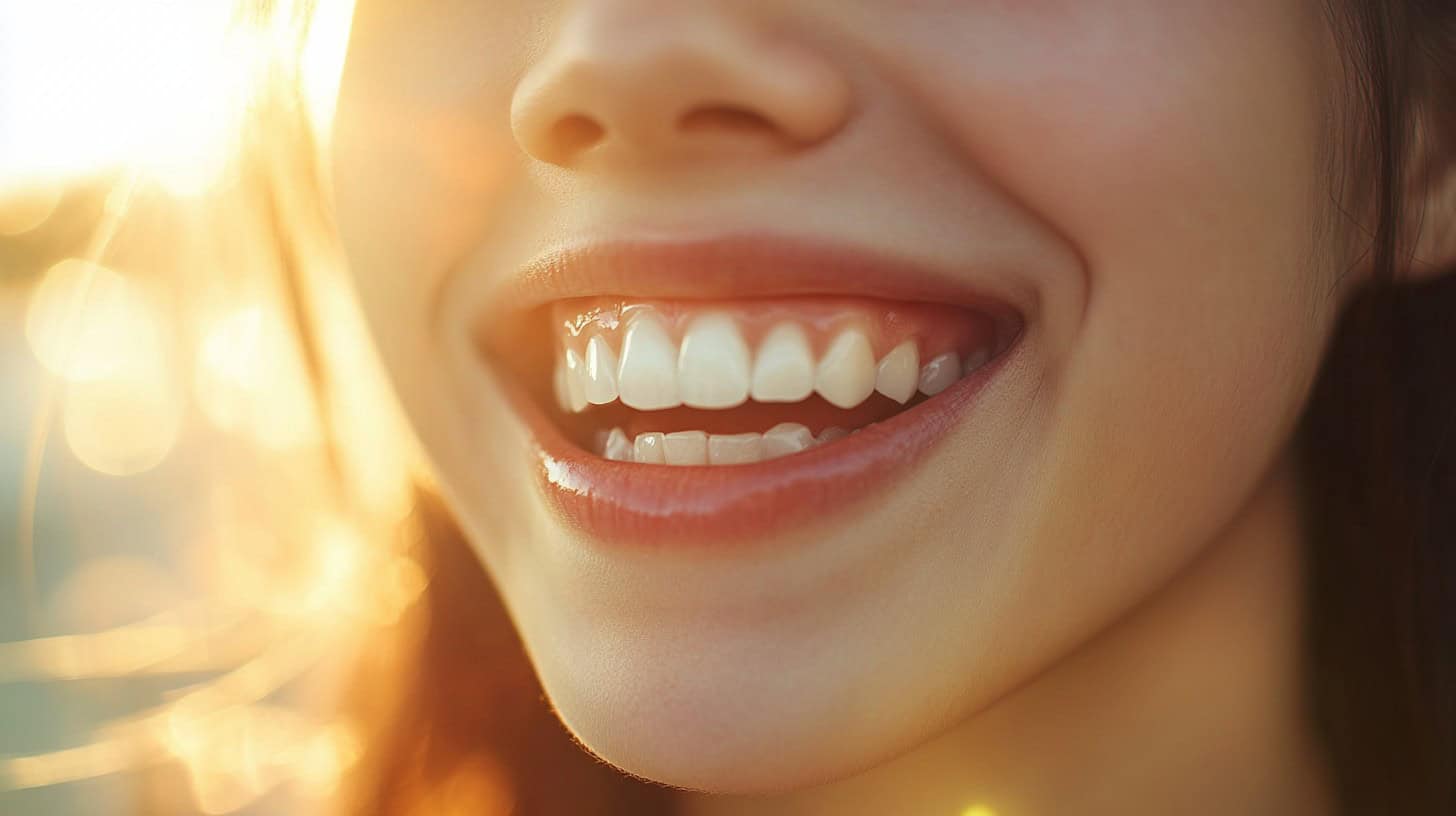
Not all teeth whitening methods are created equal. Store-bought options might seem cheaper, but pro treatments pack a bigger punch. Let’s dive into the nitty-gritty of what sets these options apart….
Store-bought vs. Professional Options
Let’s talk about teeth whitening options. Here’s a breakdown of store-bought vs. professional treatments:
| Aspect | Store-bought Options | Professional Options |
|---|---|---|
| Speed of Results | Gradual, over weeks or months | Quick, often within an hour |
| Effectiveness | A few shades lighter | Up to 8-10 shades lighter |
| Ingredient Strength | Weaker formulations | Stronger, more potent ingredients |
| Application Method | One-size-fits-all strips or trays | Custom-fitted trays for even coverage |
| Cost | Generally cheaper | More expensive, but often more effective |
| Supervision | Self-applied at home | Monitored by dental professionals |
Store-bought options are like the “lite” version of teeth whitening. They’re cheaper and easier to get, but they pack less punch. You might see some change, but it’ll take time. 15
Pro treatments? They’re the heavy hitters. Dentists use stronger stuff that works faster. In just an hour, your teeth could be way brighter. Plus, they make sure it’s done right. 14
Think of it like this: store-bought is a bicycle, pro treatment is a sports car. Both get you there, but one’s a lot quicker and flashier.
Keep in mind – everyone’s teeth are different. What works for your buddy might not work for you. It’s all about finding what fits your smile… and your wallet!
Comparing Ingredients and Strengths
Let’s talk about teeth whitening ingredients and how strong they are.
Teeth whitening products vary in effectiveness based on their ingredients and strength. Here’s a breakdown:
| Product Type | Active Ingredient | Concentration | Effectiveness |
|---|---|---|---|
| Whitening Toothpaste | Mild Abrasives | N/A | Minimal – Removes surface stains only |
| OTC Whitening Strips | Hydrogen Peroxide | 3-10% | Moderate – Can lighten 1-2 shades |
| At-home Tray Systems | Carbamide Peroxide | 10-22% | Good – Can lighten 2-3 shades |
| In-office Professional | Hydrogen Peroxide | 25-40% | Excellent – Can lighten up to 8 shades |
Pro tip: Higher concentrations are more effective but might cause sensitivity. I once tried a 35% peroxide treatment… whew, talk about sensitive chompers! Stick to lower strengths if you’ve got delicate teeth. 1
Over-the-counter products max out at about 10% peroxide. Anything stronger needs a pro’s touch. Why? Too much of a good thing can hurt your pearly whites. 16
Wondering how these work? The peroxide breaks down, releasing oxygen that busts up stains. It’s like sending tiny cleaning bubbles into your teeth!
Bottom line: For minor touch-ups, OTC products do the trick. But for a dramatic smile? You’ll want the big guns from a dentist’s office.
Safety and Side Effects
Moving from comparing ingredients, let’s talk about what happens when you use these products. Safety’s a big deal, and yeah… there are some side effects. 1
| Safety Aspect | Side Effect | Nerd Note |
|---|---|---|
| Tooth Sensitivity | Ouch! Your teeth might hurt. | Home kits = less zings than dentist zaps |
| Gum Irritation | Red, angry gums. Not fun. | pH matters! Too acidic = ouch city |
| Dental Work Drama | Fillings and crowns might look weird. | They don’t whiten like real teeth |
| Enamel Issues | Too much bleaching = weaker teeth | Demineralization is the sciency term |
I once went overboard with whitening strips. My teeth felt like ice cubes hit them for days! Lesson learned: follow the instructions, folks. Don’t be a hero.
Your mouth is unique. What works for your buddy might make your teeth scream. Start slow, be smart. And if things get weird? Call your dentist, pronto. 17
The Role of pH in Teeth Whitening
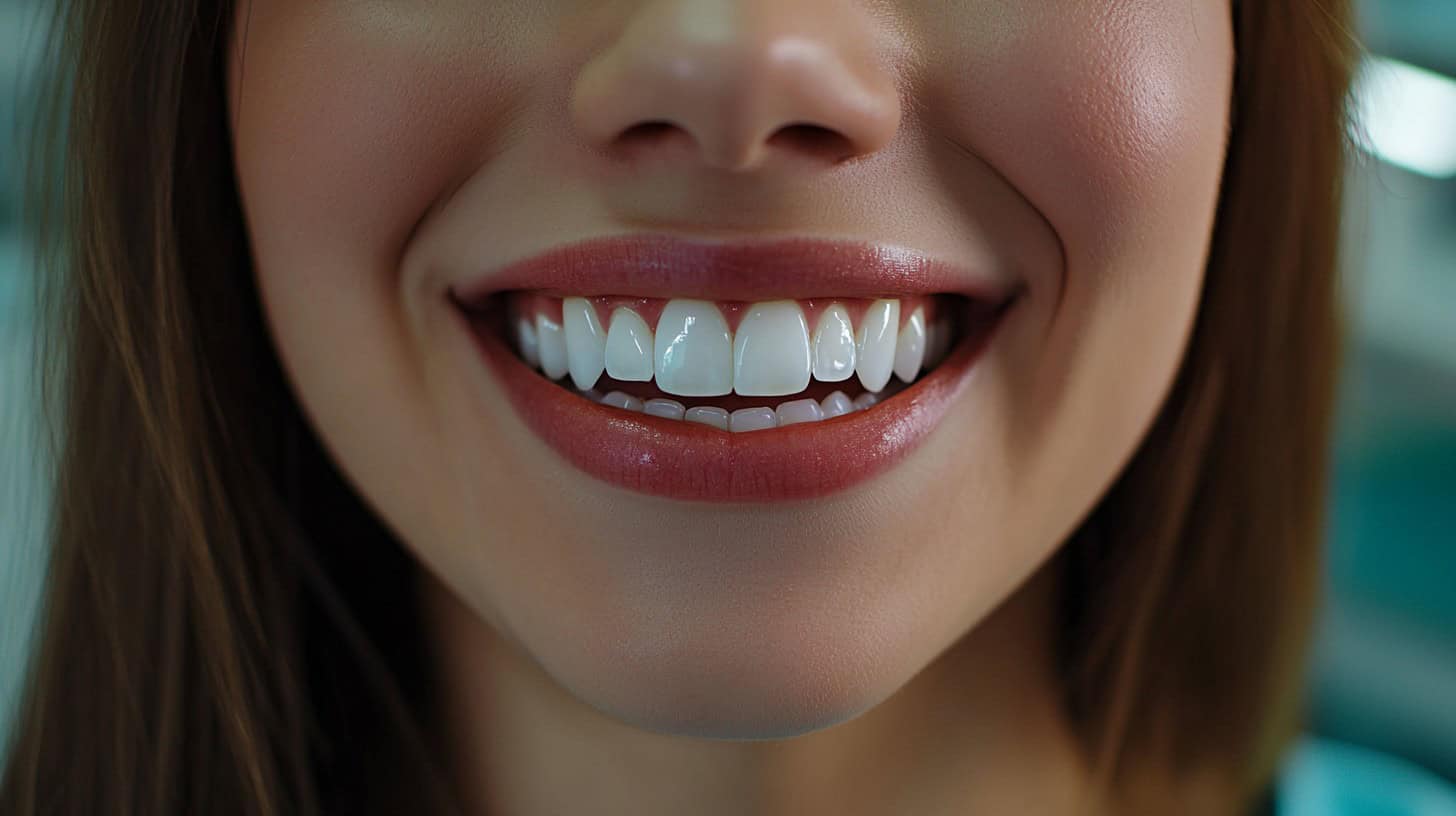
pH plays a big role in teeth whitening. It affects how well the treatment works and how safe it is for your teeth. Want to know more about the science behind that dazzling smile? Keep reading!
Impact of Acidity on Enamel
Acid is the enemy of your pearly whites. It’s like a tiny army attacking your teeth! When you sip on sodas or munch on citrus fruits, the pH in your mouth drops. At 5.5 or lower, your enamel starts to break down.
This process, called demineralization, weakens your teeth’s armor. Over time, it can lead to sensitivity and cavities. But don’t panic! Your saliva acts as a natural defense, helping to neutralize acids and restore balance. 1
Let’s talk numbers for a sec. High hydrogen peroxide levels in whitening products can be tough on teeth too. They soften enamel and make it rough. This isn’t great news for your smile’s health or appearance.
But here’s the cool part – pH plays a big role in preventing damage during whitening. Next up, we’ll explore how pH helps keep your enamel safe while you brighten your smile. 18
pH Prevention of Enamel Erosion
Keeping your teeth’s pH balanced is key to stopping enamel erosion. Enamel, the tough outer layer of your teeth, starts to break down when your mouth gets too acidic. 20 But don’t worry, geeks! There’s a science-backed way to protect your pearly whites.
Pro whitening treatments use special ingredients that fight acidity. 19 These smart compounds act like tiny shields, keeping your enamel safe from harm.
Want to keep your smile bright after whitening? Skip the soda and citrus for a while. These drinks can make your mouth too acidic and undo all your hard work. Instead, stick to water or milk.
Your teeth will thank you! Now, let’s look at how to keep that dazzling smile long after your treatment.
Neutralizing Properties of Whitening Treatments
Teeth whitening products pack a punch, but they’re not all about bleaching power. Many treatments have a secret weapon: neutralizing agents. These clever add-ins help balance the pH level of the whitening gel.
Why? Because a lower pH helps zap stains, but it can be tough on your teeth. The neutralizers step in to raise the pH, protecting your enamel from harm. It’s like having a superhero sidekick for your smile! 21
Some whitening treatments use special buffers to keep things in check. These buffers act like tiny pH police, making sure the whitening gel doesn’t go rogue on your teeth. They work hard to maintain a safe pH level throughout the treatment.
This balancing act lets you get a brighter smile without risking your tooth health. Pretty cool, right? It’s just one of the ways science is making teeth whitening safer and more effective. 20
Care and Maintenance After Whitening

You’ve got your pearly whites… now what? Keep that smile dazzling with some post-whitening TLC. It’s not rocket science, but a few smart moves can make your results last way longer.
Tips to Extend Whitening Effects
Keeping your teeth bright after whitening takes some effort. Here are some tips to make your dazzling smile last longer:
- Brush and floss daily. This removes plaque and surface stains before they set in. 1
- Use a straw for dark drinks. It helps bypass your teeth, reducing contact with staining liquids.
- Rinse after eating or drinking. A quick water swish can wash away potential stains.
- Munch on crunchy fruits and veggies. They naturally scrub your teeth as you chew.
- Avoid tobacco products. Smoking and chewing tobacco are major culprits for yellow teeth.
- Get regular dental cleanings. Professional cleanings remove tough stains and tartar buildup.
- Touch up with whitening toothpaste. It helps maintain your bright smile between treatments.
- Limit staining foods and drinks. Coffee, tea, red wine, and berries can dull your teeth’s shine.
- Consider a whitening pen for on-the-go touch-ups. It’s handy for quick fixes after meals or drinks.
- Stay hydrated. Drinking water helps wash away stains and keeps your mouth clean. 22
Importance of Oral Hygiene
After learning how to keep your smile bright, let’s chat about keeping it healthy. Good oral hygiene is way more important than geeky pickup lines for maintaining that dazzling smile. 23
- Brush twice daily: Use a soft-bristled toothbrush and fluoride toothpaste. Brush for two minutes, hitting all tooth surfaces. 24
- Floss every day: Clean between teeth to get rid of plaque and food bits your brush can’t reach.
- Rinse with mouthwash: Use an antiseptic rinse to kill bacteria and freshen breath.
- Replace your toothbrush: Switch out your brush every 3-4 months or sooner if bristles are frayed.
- Eat a balanced diet: Cut back on sugary and acidic foods that can harm tooth enamel.
- Stay hydrated: Drinking water helps wash away food particles and bacteria.
- Regular dental check-ups: See your dentist twice a year for cleanings and exams.
- Avoid tobacco: Smoking and chewing tobacco can stain teeth and cause gum disease.
- Use a tongue scraper: Clean your tongue daily to remove bacteria and prevent bad breath.
- Be gentle: Don’t brush too hard or use harsh products that can damage enamel.
Avoiding Certain Foods and Drinks
Your pearly whites need protection after a whitening treatment. Here’s a list of foods and drinks to dodge for a dazzling smile:
- Coffee and tea: These beloved brews can stain your teeth faster than you can say “caffeine.” Opt for iced versions with a straw to minimize contact. 26
- Red wine: This vino villain is a major culprit in tooth discoloration. Swap it for white wine or clear spirits if you must imbibe.
- Dark sodas: Cola and other dark fizzy drinks are tooth-staining terrors. Stick to clear, sugar-free options or plain water.
- Berries: Blueberries, blackberries, and raspberries pack a punch… to your tooth color. Enjoy them in moderation or blend them into smoothies. 25
- Tomato sauce: This pasta partner can leave your teeth looking less than stellar. Try cream-based sauces instead for a while. 25
- Balsamic vinegar: This tasty dressing can darken your smile. Use light-colored vinaigrettes as an alternative.
- Soy sauce: This Asian cuisine staple is a staining superstar. Go easy on the soy, or try coconut aminos for a similar flavor.
- Beets: These root veggies are nutrition powerhouses but can tint your teeth. Roast them with other veggies to dilute their staining power.
- Curry: This spice blend can leave your teeth looking yellow. Opt for milder, less colorful spices in your cooking.
- Sports drinks: These seemingly healthy beverages can erode enamel and cause stains. Stick to water for hydration.
People Also Ask
How does tooth bleaching work?
Tooth bleaching uses oxidizing agents like hydrogen peroxide (H?O?) to break down stains. These agents create reactive oxygen molecules that penetrate the enamel, targeting both extrinsic and intrinsic staining. It’s like giving your teeth a deep clean from the inside out!
Are there different types of tooth staining?
Yes! Extrinsic staining happens on the surface from things like coffee or juice. Intrinsic staining occurs inside the tooth, often due to genetics or certain medications. Some folks even have dentinogenesis imperfecta, a rare condition affecting tooth color.
Can whitening damage my teeth?
When done right, whitening is safe. But going overboard can lead to sensitivity or gum irritation. It’s best to chat with your dentist before starting any whitening regimen. They’ll help you avoid turning your smile into a science experiment gone wrong!
What’s the deal with pH value in whitening products?
The pH value of whitening gels matters a ton. Too acidic, and you risk enamel erosion. Too basic, and the product won’t work well. The sweet spot is usually slightly alkaline, around 7.5 to 8.5. It’s all about finding that Goldilocks zone for your pearly whites!
How do dentists approach teeth whitening?
Dentists use a mix of techniques based on your unique needs. They might suggest in-office treatments, take-home kits, or even enamel microabrasion for tough stains. Some cutting-edge practices are exploring personalized treatments, bringing the concept of tailored medicine to cosmetic dentistry.
Is there solid research backing teeth whitening methods?
You bet! Numerous randomized clinical trials (RCTs) and systematic reviews have dug into the effectiveness and safety of various whitening methods. These studies look at everything from bleaching agents to light-activated systems. It’s not just about making teeth sparkle – it’s about doing it smartly and safely!
References
^ https://www.ncbi.nlm.nih.gov/pmc/articles/PMC4058574/
^ https://dcrosewood.com/science-behind-teeth-discoloration/
^ https://www.ncbi.nlm.nih.gov/books/NBK603756/
^ https://www.clinicalresearchdental.com/blogs/whitening-hygiene/the-science-behind-teeth-whitening
^ https://www.mainlinedentalhealth.com/blog/88721-the-science-behind-teeth-whitening (2018-11-30)
^ https://www.laserglowspa.com/blogs/news/carbamide-peroxide-whiten-teeth-effectively-laserglow (2024-04-12)
^ https://www.ncbi.nlm.nih.gov/pmc/articles/PMC8874033/
^ https://www.saltlakedental.net/science-and-secrets-of-teeth-whitening/
^ https://www.ncbi.nlm.nih.gov/pmc/articles/PMC9915942/
^ https://www.briqdental.com/unlocking-the-secrets-to-a-dazzling-smile-the-ultimate-guide-to-teeth-whitening/
^ https://www.ncbi.nlm.nih.gov/pmc/articles/PMC3466022/
^ https://www.ncbi.nlm.nih.gov/pmc/articles/PMC4178330/
^ https://www.ncbi.nlm.nih.gov/pmc/articles/PMC7881219/
^ https://www.williamsburgdentalllc.com/blog/2022/08/key-differences-between-store-bought-teeth-whitening-and-professional/
^ https://smilefortwayne.com/teeth-whitening-treatments-vs-store-bought-products/
^ https://www.ncbi.nlm.nih.gov/pmc/articles/PMC10024105/
^ https://www.dentistryofwestbend.com/teeth-whitening-risks-and-side-effects/ (2023-05-15)
^ https://www.ncbi.nlm.nih.gov/pmc/articles/PMC6585585/
^ https://sandlakedental.com/blog/understanding-the-science-behind-teeth-whitening/
^ https://pubmed.ncbi.nlm.nih.gov/11040525/
^ https://copperhillsfamilydentistry.com/the-science-behind-teeth-whitening-how-it-works/ (2024-06-10)
^ https://www.ncbi.nlm.nih.gov/pmc/articles/PMC6784469/
^ https://www.ncbi.nlm.nih.gov/pmc/articles/PMC8352057/
^ https://www.dentalpartnersofboston.com/how-to-care-for-your-teeth-after-teeth-whitening/ (2018-10-12)
^ https://gloscience.com/blogs/blog/avoid-these-5-foods-after-teeth-whitening (2024-06-16)
